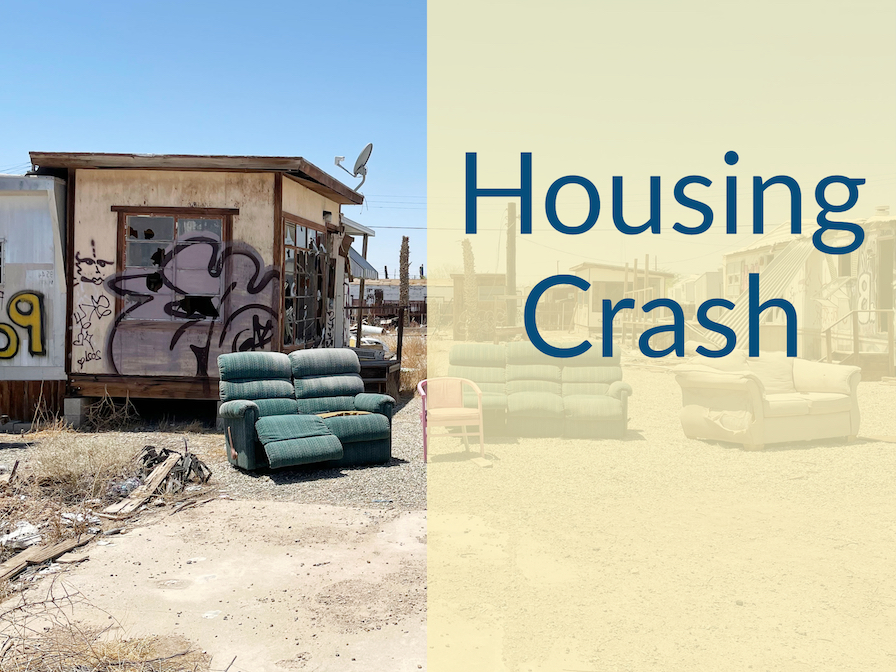What are the demand and supply drivers of home prices? What is the current status of those drivers and do they suggest a housing price crash is imminent, particularly given mortgage forbearance programs are ending?

Topics covered include:
- How much have home prices appreciated in the past year compared to historical rates
- What has driven the demand shock for housing
- Why U.S. houses are so much more affordable compared to earlier periods
- How big is the housing shortage in the U.S.
- What could cause home prices to crash
- How housing supply and demand drivers apply to local real estate markets
- How to purchase a home in a hot housing market
Show Notes
In a forgotten town by the Salton Sea, newcomers build a bohemian dream Rory Carroll—The guardian
A shock is headed for the housing market by Lance Lambert—Fortune
Housing Supply: A Growing Deficit—Freddie Mac
Episode Sponsors
Related Episodes
235: What If Home Prices Always Declined
258: How Financialization Pushes Up Home Prices
317: How To Buy In A Hot Housing Market
389: Is Airbnb Intensifying the Housing Crisis?
435: Is It Better to Rent or Buy a House?
Transcript
Welcome to Money For the Rest of Us. This is a personal finance show on money, how it works, how to invest it, and how to live without worrying about it. I’m your host, David Stein. Today is Episode 357, it’s titled “Is a Housing Crash Coming?”
Bombay Beach
Early this year, LaPriel and I drove from Palm Springs back to our home in Tucson. We took a route that went by the Salton Sea, one of the largest lakes in California; it’s over 300 square miles. The water is tranquil. The lake is surrounded by white beaches. This lake is sometimes called The Accidental Lake. It was formed in 1905 when the Colorado River breached the canal, and then for two years water poured into this desert basin.
In the 1950s, the lake became a thriving tourist destination. Frank Sinatra visited, there were marinas, houses were built. But in the 1970s a series of storms destroyed many of the houses and resorts. Then the drought hit and the water in the lake began drying up. Migrating birds used to stop. But as the lakes shrunk, the fish population died, and the number of bird species has dropped 25% in the last 5–10 years.
The town that we stopped in—it was really, really fascinating—was Bombay Beach. There are only about 250 residents that call Bombay Beach home. Back in 2015 three artists started an annual Art, Music, and Philosophy Festival in the town, one weekend each year, and the date is always changing. They don’t advertise it. They don’t sell tickets; word of mouth, and it turned this town into a sort of a really cool public art exhibit, a fascinating combination of art and decay. Mark Hagedorn said, “The town was dying. They’re bringing in young people, fixing places up.” “It’s a shot in the arm,” said Ernest Hawkins. “This place used to rock, then it went to sleep, everyone left or got old.”
I looked on Zillow to see what one could purchase a property in Bombay Beach. You can buy a lot for about $4,500. I saw one manufactured house, it sold in 2019 for $32,000. About $25 a square foot. Now Zillow estimates it’s worth about $52,000 or $43 a square foot. Bombay Beach has got to be some of the cheapest real estate in California, which emphasizes the point that real estate is very much local. Similar to when you look at a stock, there’s what’s known as systematic risk and non-systematic risk. Non-systematic risk is very specific to the company or to a neighborhood whereas systematic risk is inherent to the entire market.
A Booming Real Estate Market
In today’s episode, we’re going to look at some of the systematic drivers of real estate prices. It’s been an amazing 18 months. In the last year, U.S. home prices as measured by the S&P Case-Shiller Index have risen 18.5%. That is significantly above the long-term home price appreciation. That index, if we go back to 1953, has increased on average, on a real basis, so net of inflation, about 0.8% per year. Here we are up close to 20% in one year.
Now the index has shown some volatility; it fell 18% in 2009. But still, something happened to drive this jump in home prices. Now while we’ll share some U.S. data, there are similar drivers in other countries. And we want to look at, is this sustainable? Or will we get a 20% drop in real estate prices, a housing crash?
As a Money For the Rest of Us Plus member, you are able to listen to the podcast in an ad-free format and have access to the written transcript for each week’s episode. For listeners with hearing or other impairments that would like access to transcripts please send an email to jd@moneyfortherestofus.com Learn More About Plus Membership »
